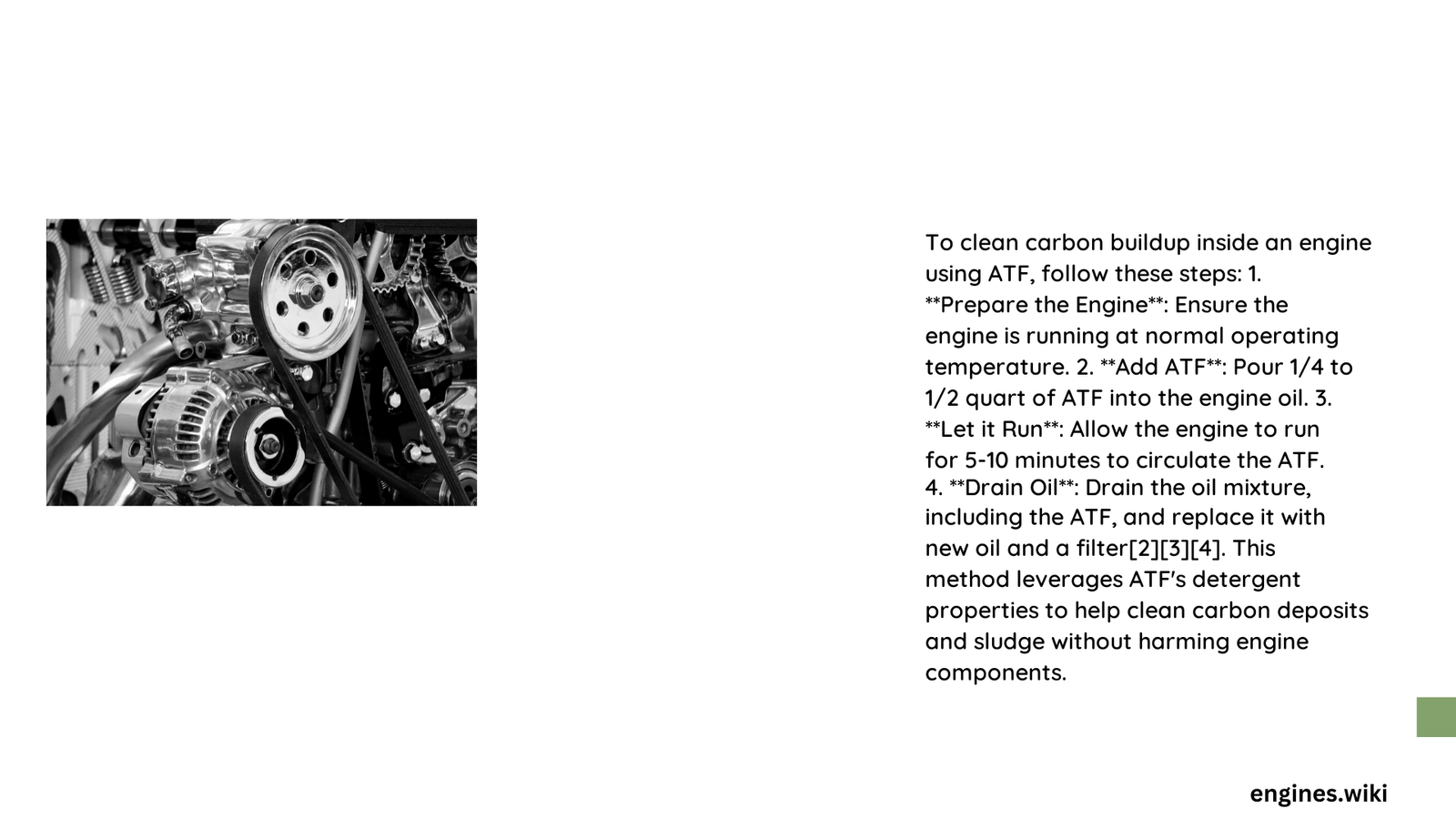Automotive enthusiasts have long explored unconventional methods for engine maintenance, and the ATF engine cleaning trick represents a fascinating yet controversial technique. This method involves using Automatic Transmission Fluid (ATF) to potentially flush and clean internal engine components, challenging traditional maintenance approaches. While some mechanics swear by this technique, others caution against its potential risks and limited effectiveness.
What Exactly is the ATF Engine Cleaning Trick?
The ATF engine cleaning trick is an alternative engine maintenance method where mechanics introduce automatic transmission fluid into an engine to potentially remove accumulated sludge and carbon deposits. Unlike conventional engine flush products, this technique relies on the unique properties of ATF to interact with engine internals.
How Does ATF Engine Cleaning Work?
| Component | Role in Cleaning Process | Potential Impact |
|---|---|---|
| ATF Composition | Lubricating Agent | Thinner viscosity |
| Engine Internals | Target Cleaning Area | Potential deposit removal |
| Circulation Time | 10-30 minutes | Determines effectiveness |
Key Considerations Before Attempting ATF Engine Cleaning
- Vehicle Compatibility
- Not suitable for all engine types
- Higher risk for older or high-mileage engines
-
Consult manufacturer recommendations
-
Potential Risks
- Possible seal damage
- Reduced lubrication protection
- Potential performance degradation
Why Do Mechanics Debate the ATF Cleaning Technique?

Mechanics remain divided on the ATF engine cleaning trick due to several critical factors:
- Inconsistent Results: No standardized scientific evidence supports universal effectiveness
- Manufacturer Warnings: Most engine manufacturers discourage non-standard cleaning methods
- Potential Long-Term Damage: Risk of compromising engine integrity
Step-by-Step ATF Cleaning Process
- Drain existing engine oil completely
- Add 1-2 quarts of ATF (depending on engine size)
- Idle engine for 15-20 minutes
- Drain ATF thoroughly
- Refill with recommended motor oil
- Replace oil filter
What Are Safer Alternatives?
Professional mechanics recommend:
- Manufacturer-approved engine flush products
- Regular oil changes
- High-quality synthetic oils
- Professional engine cleaning services
Expert Recommendations
✅ Do:
– Use manufacturer-recommended maintenance procedures
– Consult professional mechanics
– Maintain regular oil change intervals
❌ Avoid:
– Experimental cleaning techniques
– Unverified internet “tricks”
– Ignoring manufacturer guidelines
Technical Insights into ATF Composition
ATF contains unique additives that might temporarily interact with engine deposits:
- Detergent Packages: Mild cleaning properties
- Friction Modifiers: Potential internal surface interaction
- Viscosity Characteristics: Different from standard motor oils
Performance Metrics
| Metric | ATF Performance | Standard Motor Oil |
|---|---|---|
| Cleaning Power | Limited | High |
| Wear Protection | Moderate | Excellent |
| Recommended Use | Not Recommended | Designed Specifically |
Final Technical Assessment
While the ATF engine cleaning trick remains an intriguing concept, automotive experts unanimously recommend traditional, manufacturer-approved maintenance techniques. The potential risks significantly outweigh any marginal benefits.
Conclusion
The ATF engine cleaning trick represents more of a mechanical curiosity than a reliable maintenance strategy. Vehicle owners should prioritize professional advice, regular maintenance, and high-quality lubricants.
Reference:
– SAE International Technical Papers
– Society of Automotive Engineers Research
– ASE Certified Mechanics Guidelines
